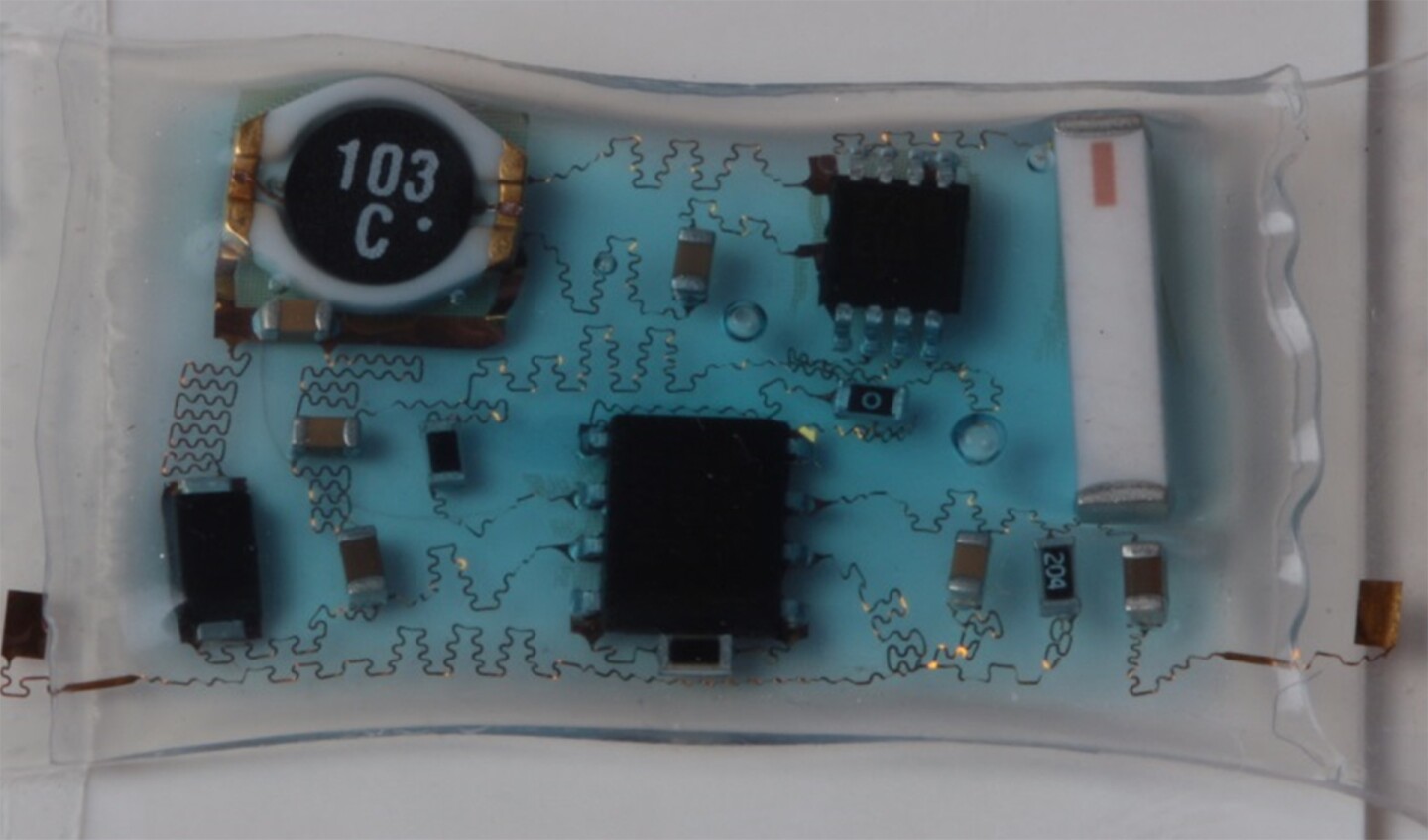A team of engineers at the University of Illinois at Urbana-Champaign and Northwestern University is developing a stick-on patch that makes health monitoring more flexible and practical. Building on previous work, the latest design replaces custom-made components with off-the-shelf, chip-based electronics to deliver a soft, tattoo-like epidermal electronic system for wireless health monitoring.
The potentially low-cost microfluidic device incorporates an assemblage of sensors and circuits connected by wires that are folded like origami, so they can bend in any direction without resistance.
The device consists of two parts. One holds the mechanics of the components and the interconnect network. The other is a thin, fluid-filled enclosure made a flexible polymer that provides a supporting substrate. Each component is bonded to the bottom of this enclosure by small cylinders.
This type of design makes it possible to create a range of bio-integrated devices that can be wirelessly powered to measure body functions, acceleration, temperature, etc. with radio frequency (RF) data transmission and transmit data to a computer in real time.
The engineers envisage the patch being used for wireless health tracking via cell phones and computers, as well as clinical monitoring such as EKG and EEG testing.
Tests have shown that the patch stacks up well to traditional EKG and EEG monitors. Its ease of use and softness would be an advantage for situations requiring long-term monitoring, such as sleep studies where natural movements are necessary to produce accurate outcomes. It could also benefit premature newborns whose skin is very fragile.

As a fitness monitoring system, the flexibility of the design promises advantages over current approaches.
“When you measure motion on a wristwatch type device, your body is not very accurately or reliably coupled to the device,” said Illinois professor John A. Rogers. “Relative motion causes a lot of background noise. If you have these skin-mounted devices and an ability to locate them on multiple parts of the body, you can get a much deeper and richer set of information than would be possible with devices that are not well coupled with the skin. And that’s just the beginning of the rich range of accurate measurements relevant to physiological health that are possible when you are softly and intimately integrated onto the skin.”
The research is detailed in the April 4 issue of Science. The video below shows the interaction of the flexible monitoring patch with the human skin.
Source: University of Illinois











